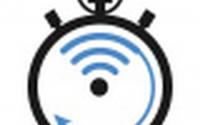Contents
PTE tips by sections – Speaking
I would say, that the most important section among the four should be Speaking. Because without scoring good enough in this part, in most cases you will not be able to achieve your desired score. Here are some tips that you should not overlook.
General
1. Recording plays only once.
2. The microphone will close if it does not recognise any sound after more than 3 seconds and once it detects that it will stop recording.
3. Keep answering even if you think you have made a mistake when answering. And DO NOT resume from where you made a mistake, which might cause score deduction.
4. This section requires fluency and pronunciation. Accent is not scored. So, do not worry if you are at all concerned about your accent.
5. You do not need to answer fast. Just speak at your normal pace and you will be scored properly.
6. When you are stuck on answering, try not to use words like “umm”.
7. Your answer will not be scored until the microphone activates. So, do prepare as much as much you can before the microphone activates.
8. Note taking is VERY important. Try not to write just word by word, rather take notes in blocks of words.
9. Speak clearly at a normal speed. If you speak too fast or too slow, it might affect your score negatively. Keep going even if you have made a mistake.
10. BE CONFIDENT. Practice matters. Do as much practice as you can and be natural and relaxed when doing this part.
11. Practise practise practise! You can do so by using a guide book provided by Pearson.
12. Record your answers on a daily basis to make sure your answers are fluent.
Read Aloud
Question sample image
Time limit: 30-40 seconds depending on the question
Number of items: 6~7 items
Affected scores: Speaking, Reading
Content: Read aloud script displayed on the screen.
Tips
1. Be confident! Answer naturally and fluently. It Does not matter if you make a few mistakes when answering, it will not affect your score so much. The important thing is to keep going. Practice 30 questions a day by reading aloud.
2. Singular or plural.
3. Fluency is VERY IMPORTANT. Try to speak the whole question at the same speed. Do not speak fast / slow at some part.
4. Practice any unfamiliar words before the microphone opens, which will ease your nerve.
5. Read through the script at least twice before the microphone opens to make you familiar with the script.
6. Do not resume answering from where you made a mistake. It might affect your score negatively.
Instructions
This is the very first question type in PTE Academic test. Your score will just get better as much as you practise this part. By doing better in this, it will give you more confidence for the rest of the test as well.
At the test centre, you will hear other candidates answering, which will definitely distract your testing. If you have no confidence in speaking, you won’t be able to use 100% of your skills. If you cannot do well on this question type, your score will be just staggering. Trust me, I have seen more than 10 students who gave up PTE because of a lack of practice in the Speaking section. So do not be overconfident unless you have practice enough to be really confident.
Your score in Read Aloud will affect both Speaking and Reading. In general, the Reading section is hard which means that you will need to do well in the other sections which affects the Reading section. Because I have seen many test-takers struggling with the Reading section, practicing well on Read Aloud will ease your issue.
Do as much practice as you can in Read Aloud. Confidence is important and do not be nervous in answering. Your score will be thoroughly assessed by computers, not by humans. Answering at a normal speed and fluently through the whole question, your score will be improved. This also means that you will have a hard time achieving a good score in Speaking and Reading if your Read Aloud is poor.
Practice material: VOA Learning English
Voice of America (VOA) adds news with audio daily. Since the recording is not very fast, I found this very useful to practice Read Aloud.
VOA Learning English
Repeat Sentence
Question sample image
Time limit: 10-15 seconds depending on the questions
Number of items: 10-12
Affected score: Speaking, Listening
Content: You hear a recording first. Then you speak as you just heard it.
General
1. Your short-term memory matters! It is quite hard to exactly replicate what you have just heard, so try to master this part.
2. Close your eyes when hearing the recording, which will help you focus on the recording.
3. Copy exactly what you hear, including speaking tempo and speed. If you answer just one word it won’t give you any score. Try to answer by speaking in blocks of words.
4. Right after you have heard the recording, try to read in your head which may help you when you answer.
5. You do not need to remember everything and it will be just hard for most of us. Try to aim for a partial score.
6. Note taking is not efficient in most cases unless the recording is very short. Try to just listen and let yourself speak as you just heard, which won’t impede your listening and memory skills.
7. Speak in blocks of words otherwise you will get a zero score.
Instructions
As I mentioned above, you won’t have any valid score by just saying one word. And paraphrasing will give you the same result.
You can aim for a higher score by answering exactly what the recording says, including pronunciation, fluency and so on.
Sample question
I think I have left my textbook in my lab.
In the above question, you won’t be given any score just by answering “textbook” or “in my lab”.
You will only be given a valid score by answering such as “I have left my textbook” and “in my lab”.
Since you need to have perfect answer for each Repeat Sentence, you do not need to venture much on this part because it is just hard! Rather, you try to aim for partial score like below;
I think I have left my textbook in my lab.
As long as you answer words in the highlighted area, you will be given 2 out 3 points for the question.
Of course, there are questions in a longer sentence and in some questions the recordings just go really fast. Do not be disappointed. The most important thing is to try to get 2 / 3 for each question. You do not need to get a full mark for all the questions.
Practice material: VOA Learning English
Same for Read Aloud, Voice of America (VOA) provides news with audio daily, which can be a good source for learning material.
VOA Learning English
Describe Image
Sample question image
Time limit: 40 seconds
Number of items: 6-7
Affected scores: Speaking only
Content:
You will see an image on the screen and describe it within 40 seconds
General
1. Figure out the type of question in the first 5 seconds
2. Figure out what kind of answer the question is expecting.
3. Common questions are graph, picture, map, chart and table related ones. By looking at the image, try to see the core point of it and take notes.
Example: For a graph question you can take notes on the smallest and largest numbers on the note pad.
4. Use the whole 40 seconds for your answer. The longer you answer the more chances you will be given a higher score.
5. Introduction -> Body -> Conclusion is the rule of thumb for this part. Do not skip any of them otherwise you will lose some points.
Instructions
As mentioned above, Describe Image contains various question types. Focus on graph / chart questions as these are easy to use with a template. You can create your own by looking at the templates below.
Graph / Line chart
You will see at least one graph or chart question in your test. Try to get full marks for these.
Template
1.The data tells us information about “graph / line chart title”
2.When you look at the graph, at the beginning of the ~, but at the end of the ~
3.On top of that ~
4.In conclusion, the graph tells us that ~
Sample answer
1.The data tells us information about (title: monthly expenses year wise comparison).
2.Red line means online food recharge and blue one shows online mobile recharge while yellow line indicates online ticket booking.
3.When you look at the graph, online food ordering was the highest starting at 1500 and ending at 1700 in 2017 whereas Online mobile recharge was at 1000 in 2015 and decreased steadily to 400 by 2017.
5.On top of that, Online ticket booking was 500 in 2015 but it went up to 1500 in 2017 close to online food ordering.
6.In conclusion, online food ordering and online ticket booking grew while online mobile recharge decreased.
Pie chart
As well as graph and chart, a pie chart can also be easy using a template.
Template
1.The data tells us information about “chart title”.
2.Elements mentioned here are 1,2,3…
3.At XX%, A takes the largest percentage, which is followed by B at YY%.
4.C comes third at ZZ%.
5.On top of that ~.
6.In conclusion, A has the majority among all of the elements.
Sample answer
1.The data tells us information about (title: Preferred Mode of Commuting).
2.Elements mentioned here are metro, car, bike and local bus.
3.At 42%, largest percentage of people use metro as preferred mode of commuting, which is followed by bike at 24%.
4.Local bus comes third at 23%.
5.And finally, car comes fourth at 11%.
6.In conclusion, metro is the most popular mode of commuting while car is the least popular one.
Table
This is also a common question type in Describe Image.
Template
1.The data tells us information about “table title”.
2.The column on the left explains ~ whereas the right column indicates~.
3.In terms of the left column, ~
4.Regarding the right column, ~
5.On top of that ~
6.In conclusion, the table tells us that ~
Flow chart / Process
You may also encounter these questions:
Template
1.The picture tells us information about “flow chart / process title”.
2.It has X of steps, namely, Y, Z, ….
3.At the beginning of the cycle, ~
4.After that, ~
5.In the third stage,
6.The next stage,
7.Finally,
8.It conclusion, this reveals that ~.
Practice material: Pearson Test of English Academic Practice Tests Plus
The best source for this part is the learning material provided by Pearson as follows.
Pearson Test of English Academic Practice Tests Plus and CD-ROM with Key Pack
Retell Lecture
Sample question image
Time limit: 40 seconds
Number of items: 2-3
Affected score: Speaking, Listening
Content: You hear a 1-2 minute lecture recording and summarize it within 40 seconds
General
1. Take notes as much as you can
2. If you see any picture on the screen predict before the lecture recording begins.
3. Focus on the core of the idea spoken in the lecture.
4. Same as Describe Image, use the whole 40 seconds for your answer.
5. Same as Describe Image, answer by Intro -> Body -> Conclusion.
Instructions
Lots of practice needed! Read below to see how you can improve your score.
How to practice
The microphone will open in 15 seconds after the lecture recording ends. When you practice, make sure that you record your answer. After finishing the question you will listen to your recording to see where you can improve such as anything that may be missing in your answer and any typical mistakes you may make.
Template
In the lecture, the speaker talks about ~
At the beginning of the lecture, the speaker says,
Also the speaker mentions that ~
According to the speaker ~
In conclusion, the speaker indicates that ~
Practice material: 60 Second Science – Scientific American
I find Scientific American’s 60 Seconds Science the best learning material for Retell Lecture. They update 1-2 minute news with audio daily, which makes this source very valuable for practice.
60 Second Science
Answer Short Questions
Sample question image
Time limit: Depending on the question
Number of items: 10-12
Affected score: Speaking, Listening
Content: Answer a short question
General
Candidates tend to make mistakes by hearing the question wrongly. Make sure you understand which questions are asked.
Practice material: Pearson Test of English Academic Practice Tests Plus



Be First to Comment